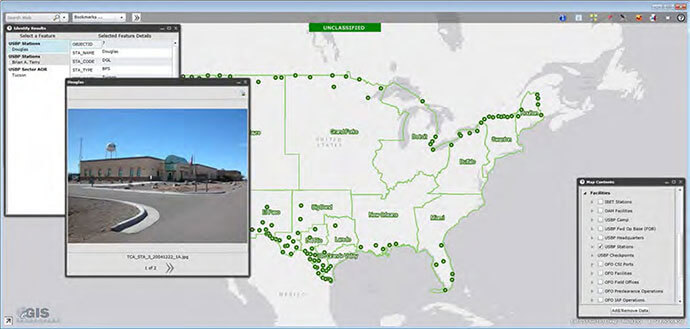In its efforts to effectively apprehend drug traffickers, smugglers and transnational criminal organisations, Australia takes a whole-of-government approach to its national security.
Increasingly, this translates to ensuring its technology systems are interoperable and primed to support multi-agency missions.
In part two of this three-part blog series, Assistant Chief Patrick Stewart shares insight into the United States Border Patrol’s approach to interoperability and provides real-world examples of how they have created shared situational awareness to collaborate with agencies including the FBI on multi-state missions.
Q: It’s well-known one of the greatest strengths of the United States Border Patrol’s GIS solution is its interoperability with technology, data and departments. How has integrating and sharing your data in this manner improved your operations?
A: In the United States, many agencies have their own platform and some have multiple platforms to support various agency components. At Customs and Border Protection, we are making significant progress with our vision to have a truly integrated and interoperable geospatial system. Our GIS solution is robust enough that we have made it available to everyone in our agency – even those people who never considered themselves analysts and never will consider themselves analysts. As a result, we’re cutting down on data collection and duplication.
Q: Can you share a practical example of how integrating data from across USBP has strengthened your operations?
A: One example that illustrates the benefit of this approach is how we tied the GIS directly back to our case processing system. Every time someone is apprehended or arrested, we have their arrest location collected in the GIS along with all the other information we have collected while tracking them after their initial detection. For example, if ‘Person X’ is apprehended at some location, and previously apprehended in other locations, we can assess this information to reveal associations to other people who have been arrested in these same locations and gain insight into drug smuggling organisations. ‘Person X’ may be associated with ‘Person Y’ – we know this because they were previously arrested together or in a similar location multiple times and now have now been arrested again in close proximity to each other.
We correlate these critical relationships with GIS technology.
Q: Beyond improving the operations of USBP, how has creating this shared situational awareness supported multi-agency missions?
A: We provide access to our primary geospatial platform – eGIS – to other agencies including U.S. Coast Guard and U.S. Immigration, and Customs Enforcement within the Department of Homeland Security. In the short to mid-term, we’re also looking to eventually open up access to our imagery (collected with drones and manned aircraft) to all government agencies as an external service for them to use as needed. We have access to some key data types not collected by the other agencies – such as aerial imagery collected in remote areas. This is valuable information for groups like the Department of Defence and the FBI from time to time, depending on the nature of their investigations.

Another good example is with our ‘Agent Visualisation Platform’ (AVP) which is a mobile system that ties back into the eGIS system. This app shares blue force tracking and enforcement data with agents in the field, and can be ‘switched on’ at a moment’s notice for agencies that partner with us in the field. In practice, this means the FBI or Drug Enforcement Administration can access a tactical map that is fully compatible with ours by simply logging into our service via their mobile device. If they are leading the operation or investigation, we can use the same application to connect to their data for shared situational awareness.
A good example of the value of this system was a manhunt for individuals who escaped from prison. This was a multi-state operation lead by FBI. Our tactical team joined them and used this application framework to connect with the FBI system so we could all identify friendly forces and collaborate on the operation, which resulted in the escapees being found. Having access to this information helped ensure a resolution with no officers or agents harmed.
This is the second interview with Assistant Chief Patrick Stewart in a three-part series. Find out more in the first interview about the USBP’s innovative approach to drug control, or the second interview on how AI and ML can help catch criminals such as drug traffickers.
If you’d like more information on how GIS can support your operations, call 1800 870 750 or submit an enquiry.

